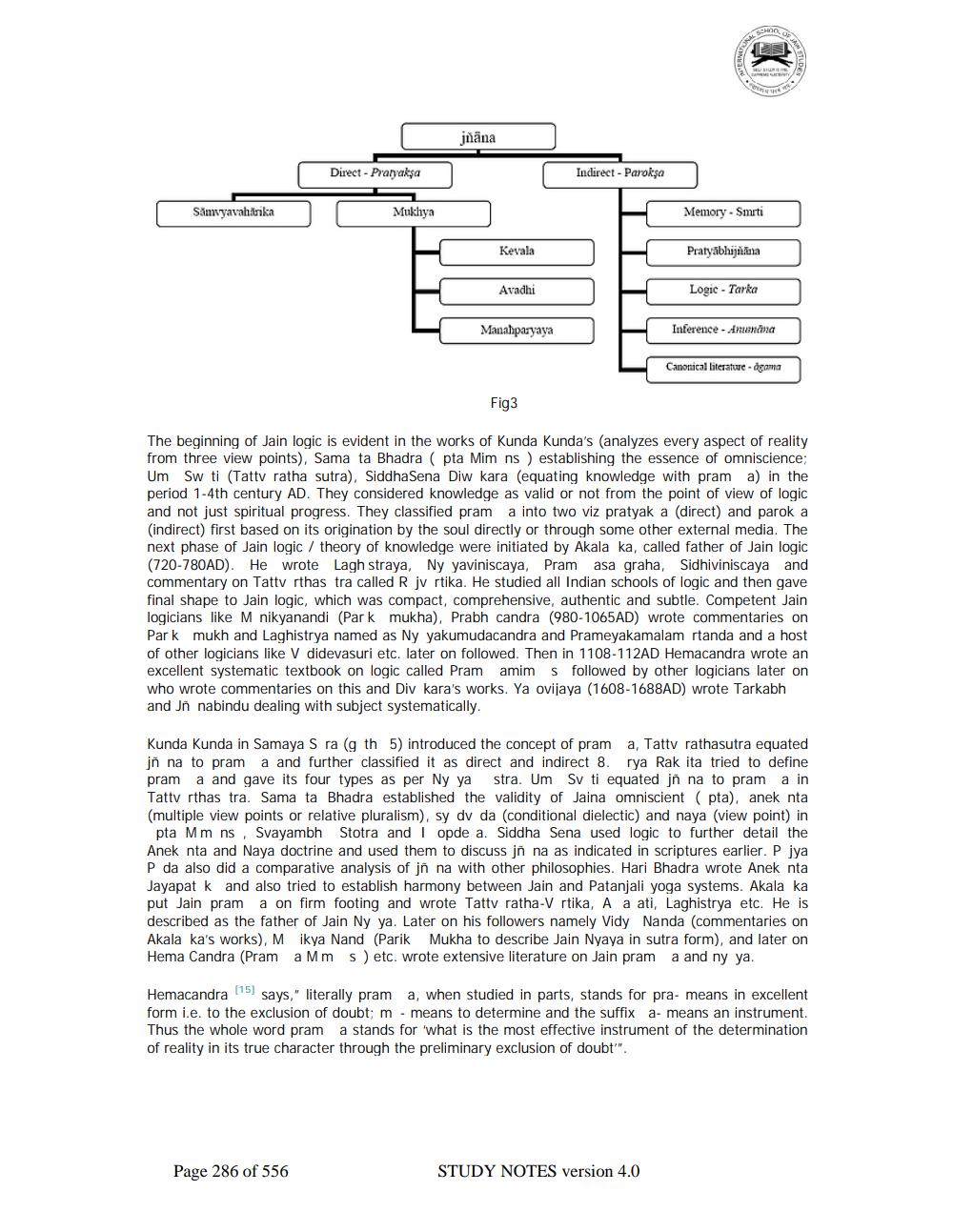________________
jñāna
Direct - Pranaksa
Direct - Praryaksa
Indirect - Parokşa
Indiet- Pa
Samvyavahanka
Mukhya
Memory - Smrti
Kevala
Pratyabhijñana
Avadhi
Logic - Tarka
Manatsparyava
Inference - A
nna
Canonical literature - agama
Fig3
The beginning of Jain logic is evident in the works of Kunda Kunda's (analyzes every aspect of reality from three view points), Sama ta Bhadra ( pta Mim ns ) establishing the essence of omniscience; Um Sw ti (Tattv ratha sutra), Siddha Sena Diw kara (equating knowledge with pram a) in the period 1-4th century AD. They considered knowledge as valid or not from the point of view of logic and not just spiritual progress. They classified pram a into two viz pratyak a (direct) and parok a (indirect) first based on its origination by the soul directly or through some other external media. The next phase of Jain logic / theory of knowledge were initiated by Akala ka, called father of Jain logic (720-780AD). He wrote Lagh straya, Ny yaviniscaya, Pram asa graha, Sidhiviniscaya and commentary on Tattv rthas tra called R jv rtika. He studied all Indian schools of logic and then gave final shape to Jain logic, which was compact, comprehensive, authentic and subtle. Competent Jain logicians like M nikyanandi (Park mukha). Prabh candra (980-1065AD) wrote commentaries on Park mukh and Laghistrya named as Ny yakumudacandra and Prameyakamalam tanda and a host of other logicians like V didevasuri etc. later on followed. Then in 1108-112AD Hemacandra wrote an excellent systematic textbook on logic called Pram amim s followed by other logicians later on who wrote commentaries on this and Div kara's works. Ya ovijaya (1608-1688AD) wrote Tarkabh and Jn nabindu dealing with subject systematically
Kunda kunda in Samaya S ra (g th 5) introduced the concept of prama, Tattv rathasutra equated jn na to prama and further classified it as direct and indirect 8. rya Rak ita tried to define pram a and gave its four types as per Ny ya stra. Um Sv ti equated jň na to pram a in Tattv rthas tra. Sama ta Bhadra established the validity of Jaina omniscient (pta), anek nta (multiple view points or relative pluralism), sy dv da (conditional dielectic) and naya (view point) in
pta Mm ns, Svayambh Stotra and I opde a. Siddha Sena used logic to further detail the Anek nta and Naya doctrine and used them to discuss jn na as indicated in scriptures earlier. P jya P da also did a comparative analysis of jň na with other philosophies. Hari Bhadra wrote Anek nta Jayapat k and also tried to establish harmony between Jain and Patanjali yoga systems. Akala ka put Jain pram a on firm footing and wrote Tatty ratha-Vrtika, A a ati, Laghistrya etc. He is described as the father of Jain Ny ya. Later on his followers namely Vidy Nanda (commentaries on Akala ka's works), M ikya Nand (Parik Mukha to describe Jain Nyaya in sutra form), and later on Hema Candra (Pram a Mm s ) etc. wrote extensive literature on Jain pram a and ny ya.
Hemacandra 15) says," literally pram a, when studied in parts, stands for pra- means in excellent form i.e. to the exclusion of doubt: m - means to determine and the suffix a- means an instrument. Thus the whole word pram a stands for 'what is the most effective instrument of the determination of reality in its true character through the preliminary exclusion of doubt'".
Page 286 of 556
STUDY NOTES version 4.0




